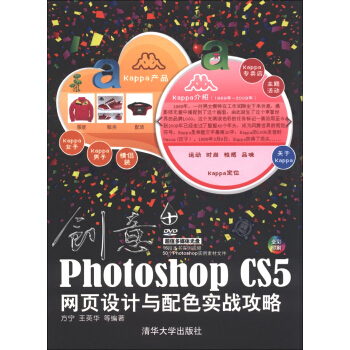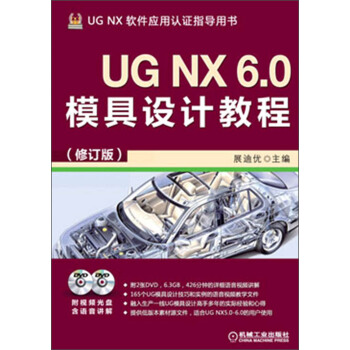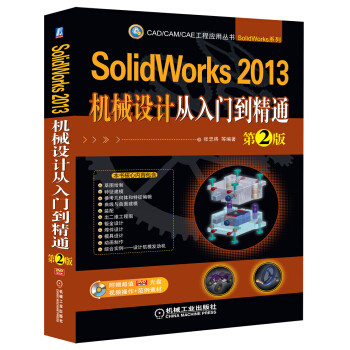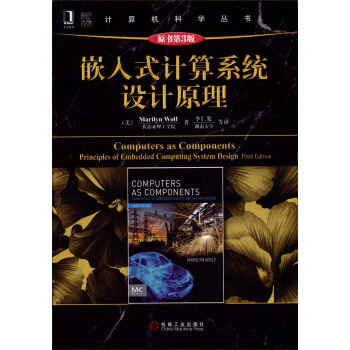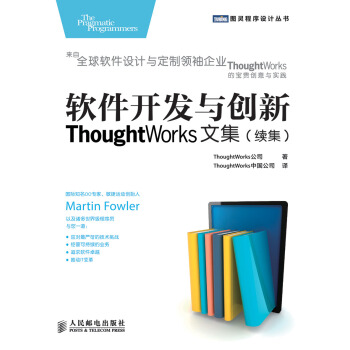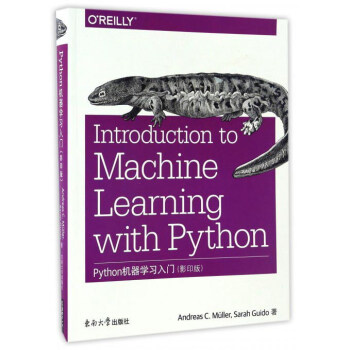

具体描述
内容简介
机器学习已经成为许多商业应用和研究项目的一个组成部分,同时拥有广泛研究团队的大型公司也投入到这个领域。如果你使用Python,即使是初学者,《Python机器学习入门(影印版 英文版)》也将教你如何构建自己的机器学习解决方案。有了目前可用的丰富数据,机器学习应用程序只受限于你的想象力。你将学习使用Python和scikit-learn库所需的全部步骤来创建成功的机器学习应用程序。《Python机器学习入门(影印版 英文版)》作者安德烈亚斯·穆勒、莎拉·圭多专注于使用机器学习算法的实践方面,而不会过多讨论其背后的数学原理。熟悉NumPy和matplotlib库将有助于你从《Python机器学习入门(影印版 英文版)》中获得*多信息。
有了《Python机器学习入门(影印版 英文版)》,你会学到:机器学习的基本概念和应用程序各种广泛使用的机器学习算法的优点和缺点如何呈现通过机器学习处理后的数据,包括需要关注的数据方面于模型评估和参数调整的**方法用于连接模型和封装工作流的管道的概念处理文本数据的方法,包括特定于文本的处理技术改善你的机器学习和数据科学技能的建议
作者简介
AndreasMuller,在波恩大学的机器学习专业获得博士学位。在担任计算机视觉应用的机器学习研究员后,他加入了纽约大学数据科学中心:他也是scikit-learn维护者和核心贡献者。SarahGuido,是一位数据科学家,与许多创业公司有密切合作,近担任Bitly的首席数据科学家。Sarah获得密歇根大学信息科学硕士学位,在多个学术会议上成功地发表了演讲。目录
Preface1. Introduction
Why Machine Learning?
Problems Machine Learning Can Solve
Knowing Your Task and Knowing Your Data
Why Python?
scikit-learn
Installing scikit-learn
Essential Libraries and Tools
Jupyter Notebook
NumPy
SciPy
matplotlib
pandas
mglearn
Python 2 Versus Python 3
Versions Used in this Book
A First Application: Classifying Iris Species
Meet the Data
Measuring Success: Training and Testing Data
First Things First: Look at Your Data
Building Your First Model: k-Nearest Neighbors
Making Predictions
Evaluating the Model
Summary and Outlook
2. Supervised Learning
Classification and Regression
Generalization, Overfitting, and Underfitting
Relation of Model Complexity to Dataset Size
Supervised Machine Learning Algorithms
Some Sample Datasets
k-Nearest Neighbors
Linear Models
Naive Bayes Classifiers
Decision Trees
Ensembles of Decision Trees
Kernelized Support Vector Machines
Neural Networks (Deep Learning)
Uncertainty Estimates from Classifiers
The Decision Function
Predicting Probabilities
Uncertainty in Multiclass Classification
Summary and Outlook
3. Unsupervised Learning and Preprocessing
Types of Unsupervised Learning
Challenges in Unsupervised Learning
Preprocessing and Scaling
Different Kinds of Preprocessing
Applying Data Transformations
Scaling Training and Test Data the Same Way
The Effect of Preprocessing on Supervised Learning
Dimensionality Reduction, Feature Extraction, and Manifold Learning
Principal Component Analysis (PCA)
Non-Negative Matrix Factorization (NMF)
Manifold Learning with t-SNE
Clustering
k-Means Clustering
Agglomerative Clustering
DBSCAN
Comparing and Evaluating Clustering Algorithms
Summary of Clustering Methods
Summary and Outlook
4. Representing Data and Engineering Features
Categorical Variables
One-Hot-Encoding (Dummy Variables)
Numbers Can Encode Categoricals
Binning, Discretization, Linear Models, and Trees
Interactions and Polynomials
Univariate Nonlinear Transformations
Automatic Feature Selection
Univariate Statistics
Model-Based Feature Selection
Iterative Feature Selection
Utilizing Expert Knowledge
Summary and Outlook
5. Model Evaluation and Improvement
Cross-Validation
Cross-Validation in scikit-learn
Benefits of Cross-Validation
Stratified k-Fold Cross-Validation and Other Strategies
Grid Search
Simple Grid Search
The Danger of Overfitting the Parameters and the Validation Set
Grid Search with Cross-Validation
Evaluation Metrics and Scoring
Keep the End Goal in Mind
Metrics for Binary Classification
Metrics for Multiclass Classification
Regression Metrics
Using Evaluation Metrics in Model Selection
Summary and Outlook
6. Algorithm Chains and Pipelines
Parameter Selection with Preprocessing
Building Pipelines
Using Pipelines in Grid Searches
The General Pipeline Interface
Convenient Pipeline Creation with make_pipeline
Accessing Step Attributes
Accessing Attributes in a Grid-Searched Pipeline
Grid-Searching Preprocessing Steps and Model Parameters
Grid-Searching Which Model To Use
Summary and Outlook
7. Working with Text Data
Types of Data Represented as Strings
Example Application: Sentiment Analysis of Movie Reviews
Representing Text Data as a Bag of Words
Applying Bag-of-Words to a Toy Dataset
Bag-of-Words for Movie Reviews
Stopwords
Rescaling the Data with tf-idf
Investigating Model Coefficients
Bag-of-Words with More Than One Word (n-Grams)
Advanced Tokenization, Stemming, and Lemmatization
Topic Modeling and Document Clustering
Latent Dirichlet Allocation
Summary and Outlook
8. Wrapping Up
Approaching a Machine Learning Problem
Humans in the Loop
From Prototype to Production
Testing Production Systems
Building Your Own Estimator
Where to Go from Here
Theory
Other Machine Learning Frameworks and Packages
Ranking, Recommender Systems, and Other Kinds of Learning
Probabilistic Modeling, Inference, and Probabilistic Programming
Neural Networks
Scaling to Larger Datasets
Honing Your Skills
Conclusion
Index
精彩书摘
《Python机器学习入门(影印版 英文版)》:Another very useful clustering algorithm is DBSCAN(which stands for"densitybased spatial clustering of applications with noise").The main benefits of DBSCAN are that it does not require the user to set the number of clusters a priori,it can capture clusters of complex shapes,and it can identify points that are not part of anycluster.DBSCAN is somewhat slower than agglomerative clustering and k—means,butstill scales to relatively large datasets.
DBSCAN works by identifying points that are in"crowded"regions of the feature space,where many data points are close together.These regions are referred to as dense regions in feature space.The idea behind DBSCAN is that clusters form dense regions of data,separated by regions that are relatively empty.
Points that are within a dense region are called core samples(or core points),and they are defmed as follows.There are two parameters in DBSCAN: min_samples and eps.
If there are at least rnin_samples many data points within a distance of eps to a given data point,that data point is classified as a core sample.Core samples that are closerto each other than the distance eps are put into the same cluster by DBSCAN.
……
用户评价
这本《Python机器学习入门(影印版 英文版)》的出现,对我而言,简直是一场及时雨。我之前尝试过一些中文的机器学习书籍,但总觉得少了点什么——要么是翻译腔太重,影响了阅读的流畅度;要么是内容过于浅显,不能满足我深入探索的渴望。当我看到这本书是英文原版影印的时候,我心里就打定主意要收一本。拿到书后,我的预感得到了证实。书的纸张质量不错,虽然是影印版,但印刷清晰,一点也不影响阅读。更重要的是,书中对于机器学习的讲解,逻辑清晰,条理分明。作者没有回避那些稍微复杂一些的数学概念,而是用一种相对易懂的方式将其呈现出来,并与Python代码的实现紧密结合。我最喜欢的部分是书中对监督学习和无监督学习的划分,以及对各种算法的详细介绍。例如,在讲到决策树的时候,作者不仅解释了ID3、C4.5等算法的原理,还通过具体的Python代码演示了如何构建和使用决策树。这种“理论+实践”的模式,让我能够快速地将学到的知识应用到实际问题中。这本书并没有提供大量的“开箱即用”的模板,而是鼓励读者去理解算法背后的逻辑,去自己动手实现,去调整参数。这对于培养真正的机器学习能力非常有帮助。我花了很多时间去消化书中的每一个例子,尝试去修改代码,观察结果的变化。每一次小小的成功,都让我对机器学习的理解更深一层。可以说,这本书为我开启了一扇通往机器学习世界的大门。
评分这本《Python机器学习入门(影印版 英文版)》对我这个有一定编程基础,但机器学习领域小白来说,真是一本难得的好书。我之所以选择英文原版,是因为我希望能够接触到最原汁原味的知识,避免翻译过程中可能出现的误解或信息丢失。拿到书后,我被它的结构和内容深深吸引。它不是那种堆砌代码的“速成”教材,而是从基础概念出发,逐步深入。我特别欣赏书中对数学原理的阐述,虽然我不是数学专业出身,但作者用非常直观的方式解释了诸如梯度下降、最大似然估计等核心概念。而且,每一部分的理论讲解之后,都会有相应的Python代码示例,这些代码都使用了非常流行的库,比如NumPy、Pandas和Matplotlib。我花了大量时间去理解这些代码,并尝试在自己的环境中运行和修改。通过这些练习,我不仅学会了如何使用这些库,更重要的是,我开始理解不同算法在实际数据上是如何运作的。书中对模型的评估和选择部分也做得非常出色,它教会了我如何用交叉验证、评估指标来判断模型的优劣,而不是仅仅看训练误差。这让我意识到,一个好的机器学习模型,不仅仅是会“拟合”数据,更重要的是能够“泛化”到未见过的数据。这本书的难度对我来说是恰到好处的,既有挑战性,又不会让我感到沮丧。它让我体会到了学习的乐趣,也让我对未来在机器学习领域深入研究充满了信心。
评分这本书我拿到手的时候,正值我对机器学习的兴趣刚被点燃,还在到处搜寻入门资料的阶段。当时我看了好几本书的目录和试读,最终被这本书的英文原版影印吸引了。虽然我英语不算顶尖,但看到它清晰的排版和似乎很扎实的理论基础,就觉得这可能是值得我花时间和精力去啃的。拿到书之后,我确实是花了不少时间,一点一点地消化里面的内容。有时候会为了弄懂一个概念,需要查阅大量的其他资料,有时候也会因为一个小小的代码示例,反复调试几次。这本书的优点在于,它不像有些入门书那样只讲理论,也不像有些实战书那样只给代码。它是在理论讲解和实际应用之间找到了一个很好的平衡点。每讲到一个算法或者模型,作者都会先给出清晰的数学原理讲解,让你明白“为什么”这样做,然后再给出相应的Python代码实现,让你知道“怎么”做。这种循序渐进的方式,对于我这种需要深入理解底层逻辑的学习者来说,真的太友好了。而且,它用的很多库都是机器学习领域非常主流的,比如Scikit-learn,NumPy,Pandas等,这为我后续的学习打下了坚实的基础。我尤其喜欢书中对一些经典算法的讲解,比如线性回归、逻辑回归、支持向量机等等,作者的解释逻辑严谨,很容易让人理解。即使有些地方我一开始没完全领会,但随着后面的学习深入,回过头来再看,就会豁然开朗。这本书真的给了我一个非常棒的起点,让我对机器学习这个领域有了更清晰的认识和更浓厚的兴趣。
评分坦白说,在接触到这本《Python机器学习入门(影印版 英文版)》之前,我尝试过好几本号称“入门”的书籍,但要么是内容过于理论化,让我看得云里雾里;要么是代码示例过于简单,学完之后感觉对实际问题帮助不大。当我抱着试一试的心态翻开这本书时,我立刻就被它独特的气质吸引了。这本书的讲解风格非常独特,它不是那种枯燥乏味的教科书式叙述,而是更像一位经验丰富的老师,循循善诱地引导你一步步走进机器学习的世界。我尤其喜欢书中对一些基础概念的解释,比如“特征工程”的意义,“过拟合”和“欠拟合”的区别,作者都用非常生动的例子和比喻来阐述,让我这种初学者也能轻易理解。而且,书中大量的Python代码示例,都经过了精心设计,不仅仅是展示了如何调用库函数,更是通过这些代码,让读者亲身去体验算法的运行过程。我曾经花了一个下午的时间,就为了弄明白书中关于K-Means聚类算法的一个代码细节。虽然过程有些曲折,但最终豁然开朗的那一刻,真的非常有成就感。这本书让我明白,机器学习并非高不可攀,它可以通过系统的学习和大量的实践,掌握在自己手中。我还会经常回顾书中的某些章节,因为每次重读,都会有新的体会和发现。
评分在我看来,这本书《Python机器学习入门(影印版 英文版)》之所以如此受欢迎,绝非偶然。它最打动我的地方在于,它真正做到了“授人以渔”。我之前接触过不少机器学习的书籍,但很多都侧重于“告诉”你某个模型是什么,如何用,却很少深入讲解“为什么”它是这样工作的。而这本书,恰恰弥补了这一点。它在介绍每一个算法的时候,都会先从数学原理出发,用清晰的逻辑让你明白它的底层机制。例如,在讲到神经网络的时候,作者并没有止步于简单的“层”和“神经元”的介绍,而是详细讲解了反向传播算法的数学推导,这让我第一次真正理解了梯度下降在神经网络训练中的作用。更难能可贵的是,它将这些理论与Python代码实现完美结合。书中提供的代码示例,都是非常实用的,而且质量很高。我经常会自己动手去修改代码中的参数,观察模型性能的变化,这种亲身实践的经验,远比死记硬背来得深刻。这本书的英文原版影印,也让我能够保持对技术的敏感度,避免了翻译带来的信息损耗。虽然阅读英文对我来说需要一些额外的努力,但这一切都是值得的,因为我学到的是最直接、最权威的知识。这本书不仅仅是一本入门书,更像是我在机器学习道路上的一位良师益友,它指引了我方向,也给了我前进的动力。
评分听说评价还不错就买了,确实还可以
评分挺好的一本python深入学习书籍,中英文都买了,英文版读起来原汁原味,很赞
评分非入门基础书,需要有python基础才适合
评分送货快,趁活动赶紧囤,券不要那么难抢就更好了
评分性价比很高,影印得很清晰,唯一一点不足是好几页粘连在一起,没有裁剪好
评分很好,价格小贵,希望便宜些,支持更多英文影印书。
评分Python机器学习入门(影印版 英文版)
评分京东的东西没啥说的,就算出问题也有售后。买买买!
评分很棒,就是纸的质量品控不好
相关图书
本站所有内容均为互联网搜索引擎提供的公开搜索信息,本站不存储任何数据与内容,任何内容与数据均与本站无关,如有需要请联系相关搜索引擎包括但不限于百度,google,bing,sogou 等
© 2026 book.tinynews.org All Rights Reserved. 静思书屋 版权所有

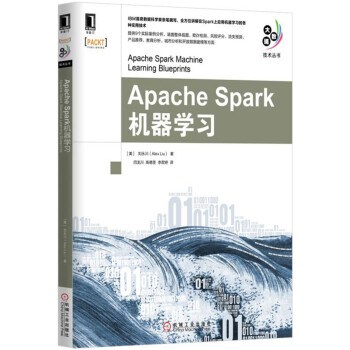
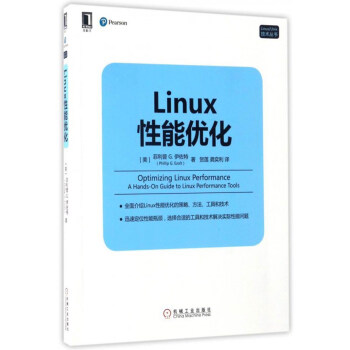
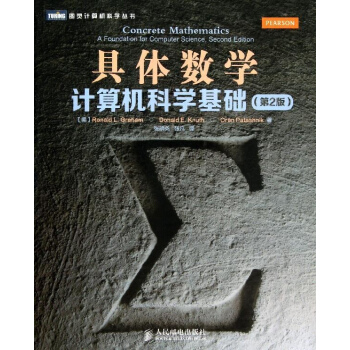
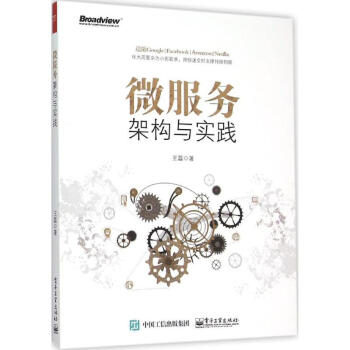


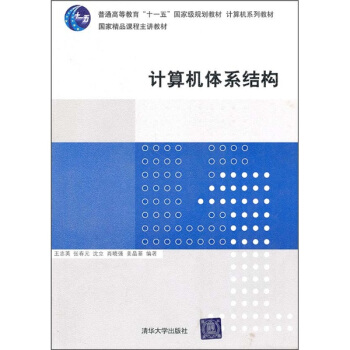

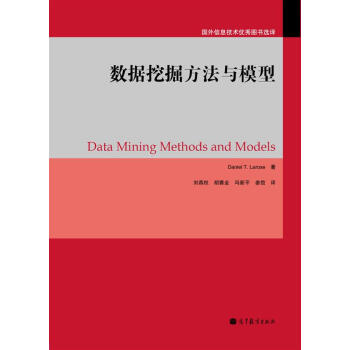
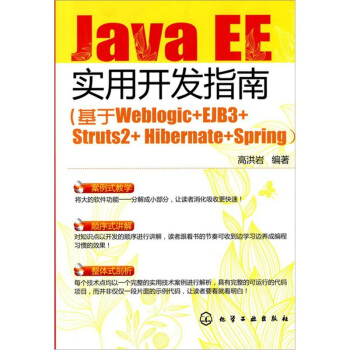
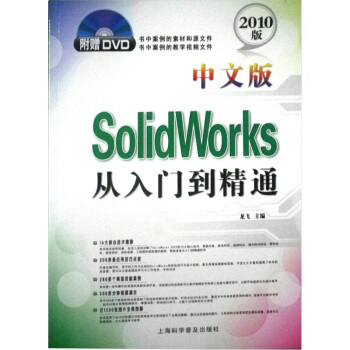
![iPad应用开发实践指南 [Learning iPad Programming: A Hands-On Guide to Building iPad Apps with iOS 5] pdf epub mobi 电子书 下载](https://pic.tinynews.org/11149991/rBEGDFDOyucIAAAAAADMyaaMre0AABABQGEolkAAMzh744.jpg)
